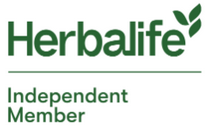Looking for a simple, easy and effective meal plan? The Daily Nutrition Meal Plans , created by Herbalife Nutrition dieticians and physicians, have built-in calorie counts and are designed to provide you with the protein your body needs every day to function at its best. All you need to do is select the plan that fits your needs. Then, create daily menus that include healthy and balanced meals, protein snacks and protein shakes (such as Herbalife Nutrition Formula 1). You can download the whole guide including recipes and meal building guides for free.
Step 1: Meal Plan Selection Tool
 No two people are alike and everyone’s protein and calorie needs vary. So how do you know which meal plan is right for you? Start with the Meal Plan Selection Tool. The charts will help you determine the suggested meal plan for you, and your plan is designed to match your individual needs for protein and calories.
No two people are alike and everyone’s protein and calorie needs vary. So how do you know which meal plan is right for you? Start with the Meal Plan Selection Tool. The charts will help you determine the suggested meal plan for you, and your plan is designed to match your individual needs for protein and calories.
The Meal Plan Selection Tool will guide you to the recommended Meal Plan based on your gender, weight and height. Each Meal Plan has four options (A, B, C and D). Once you know which plan is recommended for you, you’ll go to Step 2 to see your suggested plan.
Step 2: Meal Plans A, B, C and D
Each Daily Nutrition Meal Plan has three options: Weight Maintenance, Weight Loss and Weight Gain. Choose the option within the plan that best suits your personal goals. This Meal Plan chart shows you what a typical day will look like, with recommended meals, snacks and shakes to choose from each day. Meal Plans are created by choosing items from the following categories:
- Balanced Meals (25-40 grams protein, 400-600 calories)
- Protein Snacks (10-30 grams protein, 150-300 calories)
- Shakes (20-30 g protein, 250-300 calories)
Daily Nutrition Meal Plans
Weight Maintenance
When coupled with an appropriate exercise program, this option replaces one meal per day (typically breakfast) with a shake.
Weight Loss
This option promotes weight and fat loss when coupled with an appropriate exercise program and replaces two meals per day (typically lunch and dinner) with a shake.
Weight Gain
Using this option, get more protein and calories by supplementing with up to three additional shakes per day. When coupled with an appropriate exercise program, gain healthy weight (as lean body mass).
Meal Builder Tool
The Meal Builder tool is a simple, step-by-step approach to putting together healthy meals. Meals are made up of foods from five categories: Protein, Vegetables, Beneficial Carbohydrates, Beneficial Fats or Omega 3’s and Seasonings. Depending on your Meal Plan, you will create meals that have either approximately 25 grams of protein and 400 calories, or 40 grams of protein and 600 calories. Using the Meal Builder, you can select the exact foods you need to create your healthy, balanced meals.
First, choose the column that corresponds to the meal you are going to build. Then, select the amounts of food that are listed in each food group and combine items in a variety of ways to create healthy, balanced meals.
Here are some ideas to get you started:
Resources
When you have the right resources, it’s that much easier to achieve your weight management goals. Here is a complete set of these tools, plus some additional resources for meal and snack recipes.
- Meal Plan Selection Tool
- Meal Plans A, B, C and D
- Meal Builder (Meat and Vegetarian)
- Healthy Meal Suggestions
- Healthy Recipes
- Protein Snack Recipes
Get started now and enjoy all of the benefits of improving your wellness. Download the Meal Plan Guide
By Susan Bowerman, M.S., RD, CSSD, CSOWM, FAND – Senior Director, Worldwide Nutrition Education and Training




